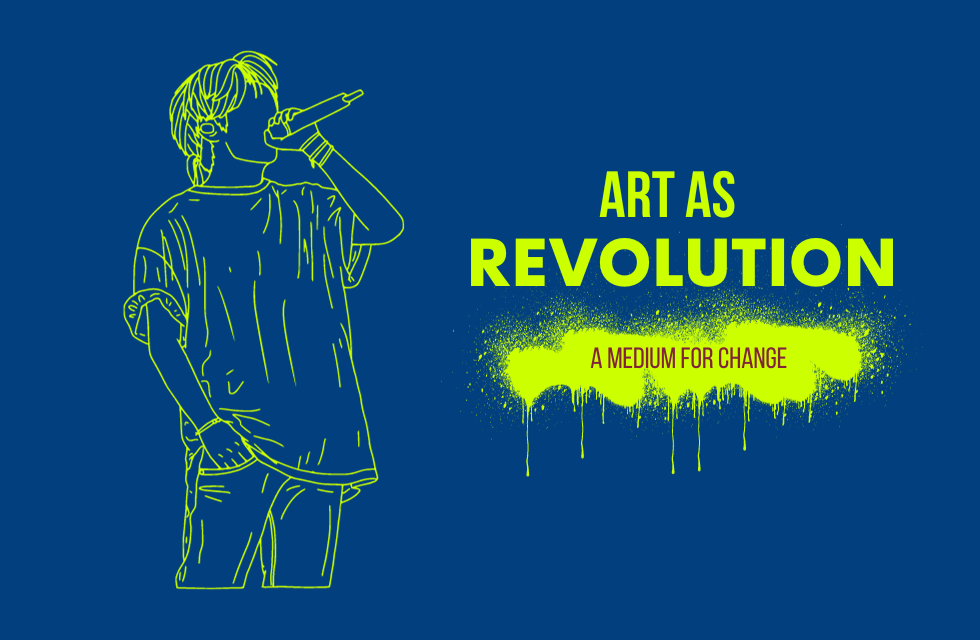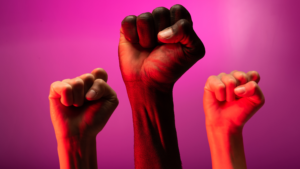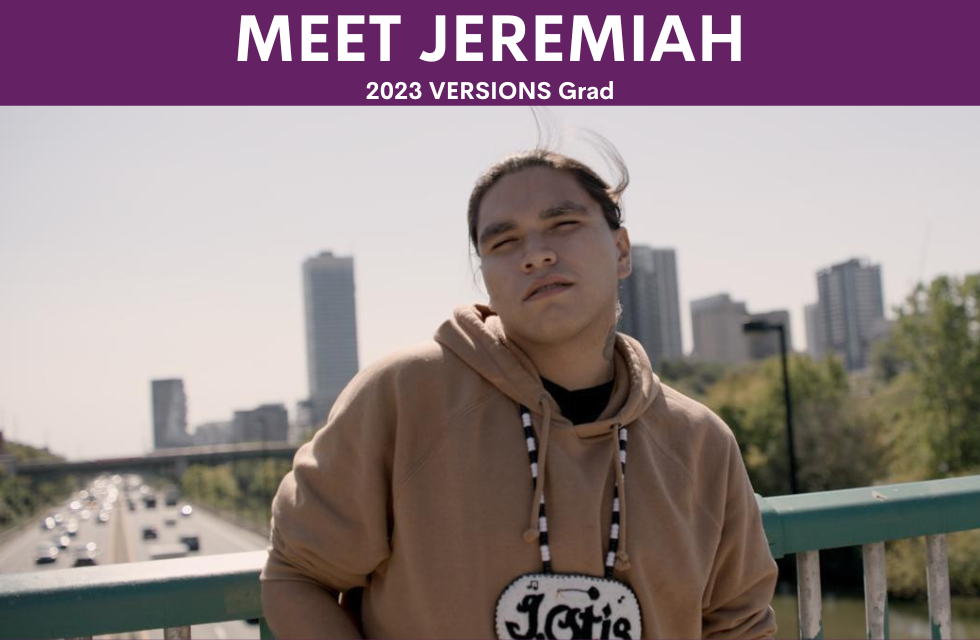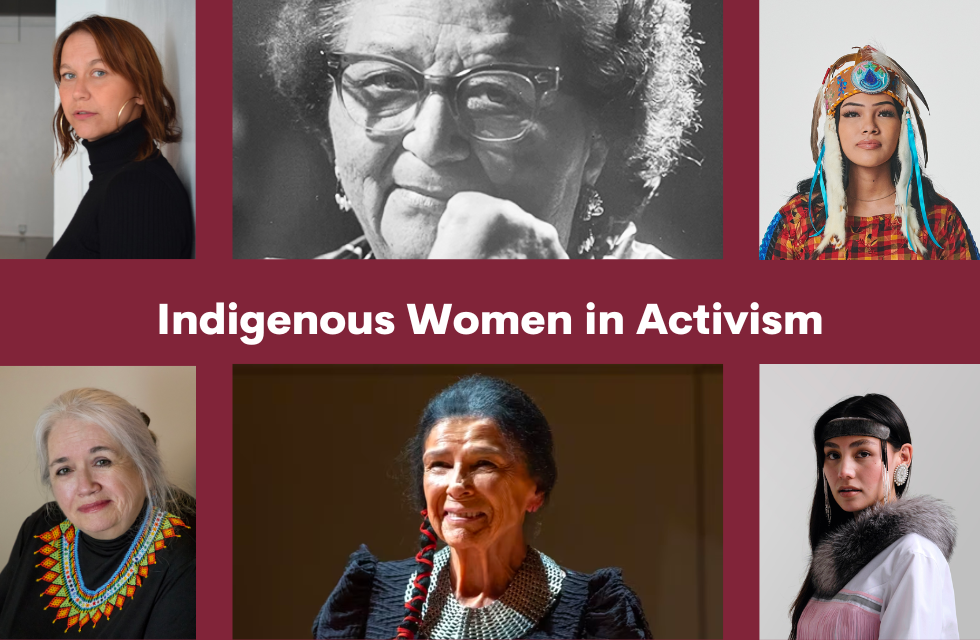In this series, we're highlighting our VERSIONS Alumni. You'll learn about their transformative journeys with…

Art as Revolution: A Medium for Change
Art, in all of its forms, can propel movements, change systems, shape culture, and unite people. When we reflect on social movements in history, we often see art standing at the heart of change. Prominent artists during these times also tend to bear the title of “activist” and use their platforms for the greater good. But how does art bring about change?
Art’s Misconception: Being “Soft”
Contrary to the idea that art is a “soft” skill with no meaningful “real world” benefits, it’s actually a powerful motivator and tool that transcends generations, cultures, and borders. While engineering, mathematics, and sciences are often praised as more “valuable,” art emerges as a force to illuminate new, uncharted paths to change the world. From film and music to dance and painting, artists are the leaders in demonstrating that intuition and emotion are essential elements alongside hard numbers.
Art serves as a universal connector, unique in its ability to express the complexity of the human experience and emotion without relying on words. It ventures into the fabric of our very being and evokes emotions that inspire us to take action. Art contains a sort of divinity that not only helps craft the masterpiece but awakens once-dormant parts of listeners. It’s simultaneously spiritual, powerful, and cloaked in mystery.
The Vital Role of Artists
 If art is vital, so too are the artists who create it. The people behind transformative art are the drivers of change. Artists are shaped by their lived experiences, education, and perspectives and funnel these pieces of their lives into their craft. They use their art as a communication channel that surpasses language, generations, and borders to invite authenticity, acceptance and growth on a global scale.
If art is vital, so too are the artists who create it. The people behind transformative art are the drivers of change. Artists are shaped by their lived experiences, education, and perspectives and funnel these pieces of their lives into their craft. They use their art as a communication channel that surpasses language, generations, and borders to invite authenticity, acceptance and growth on a global scale.
Furthermore, art requires incredible courage. Artists create from the heart—a place of ultimate vulnerability that puts them on a pedestal for the world to throw flowers or flog. In the age of the internet, access to artists is easy and makes distributing their art all the more dangerous.
Despite this, artists persevere. Their intentions often revolve around reaching listeners–to inspire, move, help, or even challenge them. In a world that’s increasingly desensitized to both horrors and beauty, art carves space for emotions—rage, love and all the ones in between—in a way other mediums simply can’t. And when art is used as a means of revolution, it can become a dangerous practice for both the artist and oppressors. Despite the danger, artists lay it all on the line, singing protest songs, publishing chilling essays and poems, and tagging buildings with anti-government slogans in the name of saving or changing the world.
Artists also possess the unique ability to transmute their feelings and experiences into pieces that unite and inspire the masses. When art is distributed, especially in times of uprising, supporters find solace in witnessing their exact experience and emotions mirrored in art—it provides relief and reduces isolation in people who are struggling. Through creative self-expression, artists forge a guiding light for countless people to follow in dark times.
Empowering Communities Through Music
Art is accessible. Its low barrier of entry to participation means marginalized communities can utilize its power to unify and communicate their experiences. We can look to Black and Indigenous communities and their use of art, specifically music, as a way to enact change and even save lives.
Indigenous Protest Music:
Indigenous protest music extends beyond its commonly associated anti-war narrative. It is a powerful medium for reciting Indigenous history and re-educating the broader society about the often misrepresented heritage. For centuries, Canada and the United States committed Indigenous cultural genocide. To counter colonists’ horrifying mission, Indigenous communities use music as a tool to help preserve culture and maintain the ancient practice of storytelling and oral history passed on to generations.
By blending traditional sounds with contemporary genres, Indigenous artists craft songs that are not just a form of resistance but also a celebration of identity and heritage—a celebration of truth.
Black Music’s Historical Roots:
The roots of Black music stretch back centuries, beginning with enslaved people who communicated through songs that not only served as an emotional escape but also relayed essential information about physical routes to freedom. In the face of slavery’s dehumanizing conditions, music became a lifeline, connecting individuals to their homeland. Following emancipation in 1865, these life-saving songs evolved into the genres of jazz and blues, marking a transformative journey from survival to artistic expression.
The Legacy of Protest Songs
 Throughout history, protest songs have played a pivotal role in social movements—in America and across the seas. They challenge social norms, express a need for change and fuel movements. These musical expressions capture the essence of their times and resonate with listeners for years after the first person pressed “play.” Let’s explore some of the most notable protest songs, exemplifying the transformative potential of art:
Throughout history, protest songs have played a pivotal role in social movements—in America and across the seas. They challenge social norms, express a need for change and fuel movements. These musical expressions capture the essence of their times and resonate with listeners for years after the first person pressed “play.” Let’s explore some of the most notable protest songs, exemplifying the transformative potential of art:
“Strange Fruit” by Billie Holiday:
Haunting and powerful, “Strange Fruit” remains etched in the minds of listeners. Performed by Billie Holiday, this song confronts the brutal reality of racism in America. Holiday’s voice became a vessel for the reality of the pain and suffering of Black people. Her message penetrated oppressive communities and forced them to confront harrowing reality. For a deeper look at the history of this song, take a look at this article on our blog.
“Born This Way” by Lady Gaga:
 Lady Gaga’s “Born This Way” is a modern anthem for the LGBTQ2S+ community. It was a symbol of solidarity for people discriminated against for their sexuality. In an interview with NPR, one person shared why the song was so important; “Because you’re not the one saying it anymore. Someone’s defending you. And it’s in a song that is playing on repeat on the radio that everyone is talking about.” This protest song was a point of conversation and a call to a marginalized group of people to know they were heard, seen, and loved. To know that they weren’t fighting alone.
Lady Gaga’s “Born This Way” is a modern anthem for the LGBTQ2S+ community. It was a symbol of solidarity for people discriminated against for their sexuality. In an interview with NPR, one person shared why the song was so important; “Because you’re not the one saying it anymore. Someone’s defending you. And it’s in a song that is playing on repeat on the radio that everyone is talking about.” This protest song was a point of conversation and a call to a marginalized group of people to know they were heard, seen, and loved. To know that they weren’t fighting alone.
“Mississippi Goddam” by Nina Simone:
Following the 1963 terrorist attack on a Black church in Alabama, Nina Simone’s “Mississippi Goddam” pulled at heartstrings and inspired listeners to push for change. The protest song encapsulated horrors plaguing Black communities. Notably, it was a response to both the Alabama church bombing and the murder of civil rights activist Medgar Evers in Mississippi. Simone’s voice turned anger into action and sparked fire inside listeners. Simone felt compelled to create powerful songs, saying, “An artist’s duty, as far as I’m concerned, is to reflect the times.”
“Fight the Power” by Public Enemy
 An iconic Black empowerment anthem, this Public Enemy song was originally featured in Spike Lee’s film “Do the Right Thing.” The hip-hop track quickly dominated pop culture and forced society to see the discrimination, injustices and inequities Black people were continuously subjected to.
An iconic Black empowerment anthem, this Public Enemy song was originally featured in Spike Lee’s film “Do the Right Thing.” The hip-hop track quickly dominated pop culture and forced society to see the discrimination, injustices and inequities Black people were continuously subjected to.
“Get Up, Stand Up” by The Wailers:
Bob Marley’s “Get Up, Stand Up” is a classic written by Marley and Peter Tosh in response to poverty and oppression in Haiti. This song revolutionized Jamaican music’s perception on a global scale and became an anthem for social and political change.
Embrace the Possibilities
At Darkspark, we celebrate the transformative power of art, especially music, and embrace the seemingly endless possibilities. Whether or not it gets the credit it deserves, music is vital in uniting and strengthening communities in the fight for the change we desire locally and globally. Artists have the opportunity to be activists–a formidable combination–and we’re proud to be guiding the next generation.




